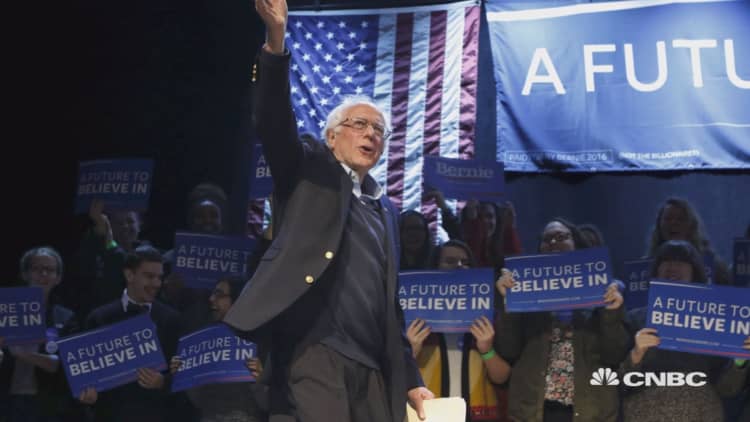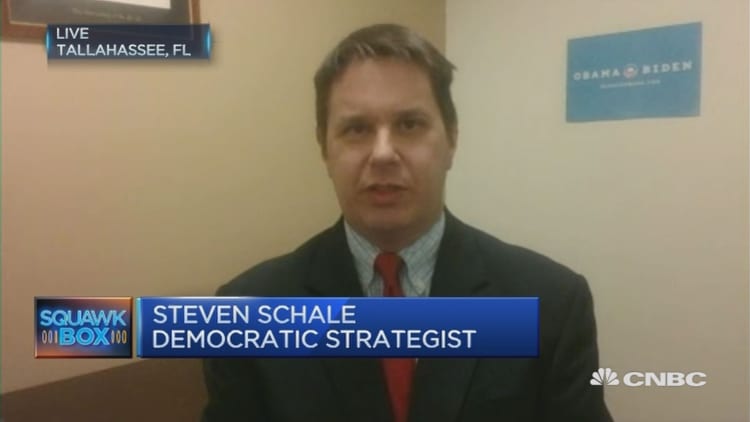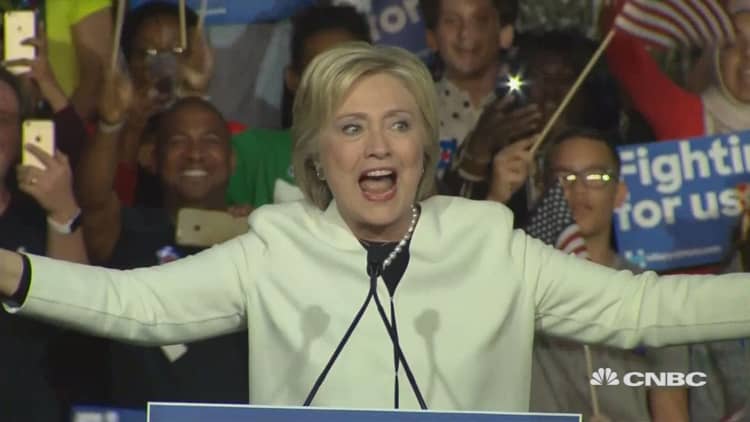


Hillary Clinton's tax plan would raise taxes on the 1 percent by an average of $78,000 per person while keeping taxes for the rest of Americans largely the same, according to a new analysis.
A study from the nonpartisan Tax Policy Center found that Clinton's plan would generate $1 trillion in additional revenue for the government over the first decade and an additional $2 trillion over the next 20 years.
Yet three-quarters of those additional funds will come from the top 1 percent of earners, according to the report. The top 1 percent — those who earn more than $732,000 a year — would see their taxes increase by an average of $78,284 in 2017 if she's elected and the tax plan is enacted.
The top 0.1 percent, or those with incomes of over $3.8 million, would see their taxes increase by an average of $519,741. The bottom 20 percent of earners, or those making $23,000 or less, would see their taxes go up by $4 a year in 2017. The middle quintile, or those making $80,000 to $142,000, would see their taxes go up by $44 a year. And the top 20 percent, who make $209,000 or more, would see an average tax hike of $4,527. (Clinton has said she plans to announce additional tax breaks of the middle class and lower earners.)
The very top of the income ladder would take the biggest hit, in keeping with Clinton's campaign theme of making the wealthy "pay their fair share." Her plan calls for a host of tax hikes aimed at the highest earners, including a 4 percent surcharge on adjusted gross income above $5 million, requiring filers with AGI greater than $1 million to pay a 30 percent effective tax rate (also known as the "Buffett Rule").
Her plan would limit the tax value of certain exemptions and deductions to 28 percent, and increase the estate tax. The plan would also create a new tax schedule for capital gains with rates declining along with the holding period of the asset.
More than half of the tax increase would fall on the highest-income 0.1 percent of filers and more than three-fourths would hit the top 1 percent.
Clinton's plan stands in stark contrast to Donald Trump's plan, which would lower taxes for the top 1 percent by an average of $275,257 per tax filer. The top 0.1 percent would get a tax cut averaging $1.3 million under the Trump plan.
Trump's proposal, which also simplifies the tax code, would reduce federal revenues by $9.5 trillion over its first decade before accounting for added interest costs or considering macroeconomic feedback effects, according to the Tax Policy Center.
"The plan would improve incentives to work, save, and invest. However, unless it is accompanied by very large spending cuts, it could increase the national debt by nearly 80 percent of gross domestic product by 2036, offsetting some or all of the incentive effects of the tax cuts," the Tax Policy said in its analysis of Trump's plan.



